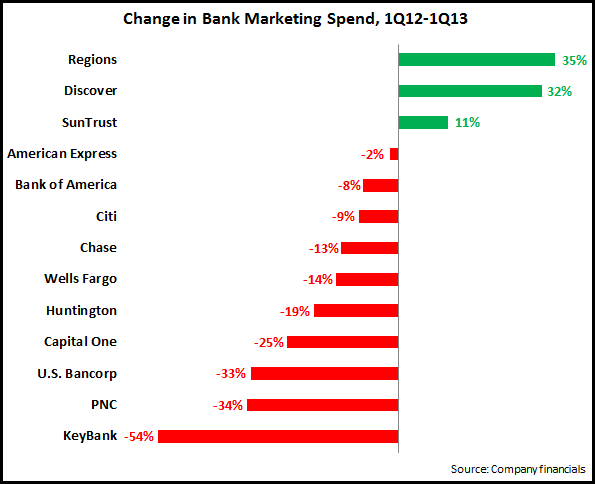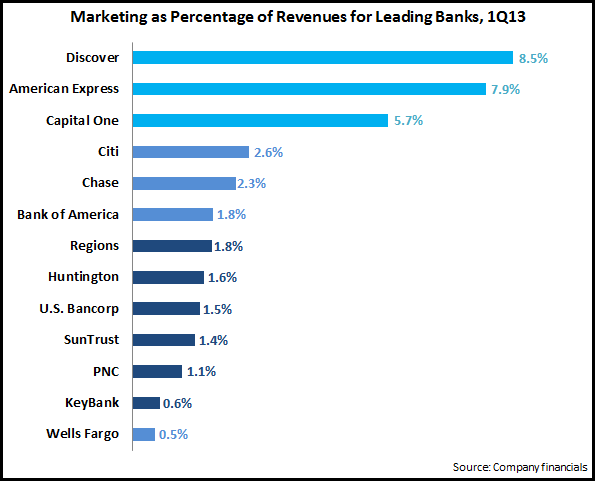In honor of Financial Literacy month (that’s April in case you’ve forgotten to note it on your calendar), we’re featuring 6 banks who have led in developing financial education resources…in very different ways:
- Regions Bank sponsored Financial Fitness Fridays in January 2013, with live seminars at their branch locations. Their My GreenGuide online learning portal is one of the best—engaging visuals, accessible advice and a good array of life stage-based calculators for everything from retirement to managing hardships. Engagement translates to differentiation.
- Wells Fargo, in their usual “do it well or not at all” style, supports

Hands On Banking, both broad and deep in the segments served and formats offered. From teens to entrepreneurs, teachers to the workplace, this program covers the ground–and delivered financial smarts to nearly 154,000 US consumers in 2012 alone - Capital One has assembled a virtual smorgasbord of learning tools, best practices, programs, seminars, games and partnerships serving just about any segment you can name—from kids to retirees, college students to newlyweds, teachers to small business owners. Buried in the maze of options they offer are some gems—including teachable moments for teens, an easy lease-vs-buy calculator for businesses and tips on preventing ID theft. But you’d have to have spare time and determination to mine the full value out of the literacy labyrinth.
 Literacy’s gone mobile at Fifth Third—and this has nothing to do with a smartphone. The Financial Empowerment Mobiles are 40-foot city buses tricked out as financial learning centers, and activated with locally staffed flash mobs and other PR-worthy activities. Less intriguing, but high-impact are 53’s age-based programs from the 5th grade focused Young Bankers Club to sponsorship of ABA’s Teach Children to Save and Dave Ramsey’s Foundations in Personal Finance high school curriculum. High community value matches well to this bank’s regional and local go-to-market strategy.
Literacy’s gone mobile at Fifth Third—and this has nothing to do with a smartphone. The Financial Empowerment Mobiles are 40-foot city buses tricked out as financial learning centers, and activated with locally staffed flash mobs and other PR-worthy activities. Less intriguing, but high-impact are 53’s age-based programs from the 5th grade focused Young Bankers Club to sponsorship of ABA’s Teach Children to Save and Dave Ramsey’s Foundations in Personal Finance high school curriculum. High community value matches well to this bank’s regional and local go-to-market strategy.- A 2011 survey found that 89% of US parents think they are important in teaching children about basic money management, but less than 4 in 10 actually do it. BMO Harris is out to close the gap with its engaging and comprehensive Helpful Steps for Parents. Activity books for kids, age-based practical advice, blogs and videos targeting common teachable moments make this one of the best kid-centered efforts out there. The Zone offers activities, games and learning in kid-friendly form—and does well until it misses with the teen audience.
- PNC leverages their $350mm commitment to Grow Up Great, their multi-year, comprehensive initiative focused on helping kids under 5 prepare for success in school, made even better through partnership with Sesame Workshop. The program’s financial education reach includes distribution of more than a million multimedia kits, teacher training, parent guides, PNC staff volunteers and grants for local efforts across PNC’s footprint. Like PNC’s hypercool Virtual Wallet targeting the millenials, the S is for Savings product is the market leader—a $25 minimum balance is packaged with a kid-friendly interactive demo, tips and the online equivalent of a piggy bank. And these are only part of PNC’s broad-based financial education curricula. Like most PNC efforts, their literacy approach is systematic, segmented and substantial.
Financial education offerings are as varied as their sponsors. And their value is clearly broader than ticking a box on a regulatory checklist. Financial literacy done right builds engagement and loyalty. What’s more, smarter consumers are better customers.

